Inchmahome Priory
Inchmahome Priory's claim to fame is that, for a brief period in 1547, it was the refuge for a young child: Mary, Queen of Scots.
She was taken there to guard against any attempts to kidnap her by the English, following their victory at the battle of Pinkie, near Edinburgh.
The Priory sits in the middle of Lake Menteith. It was only accessible by a lengthy boat trip, and was under the control of the son of Lord Erskine, Mary's guardian. The island is quite small:
an easy stroll will take you round the circumference in less than 20 minutes.
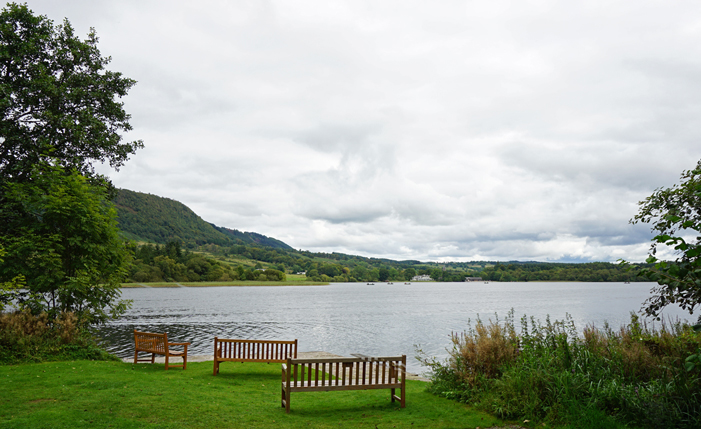
Looking across Lake Menteith from Inchmahome towards Port Menteith
Inchmahome was abandoned shortly after the Reformation of 1560 and fell into ruin. It became a tourist attraction in the 19th century. Surprisingly, there are some 19th and 20th century gravestones and memorials in the east end of the church.
The Priory and its outbuildings are the only original structures still standing on the island, though there may have been some others which were removed piecemeal for their stone. Certainly the known buildings are too small to have accommodated many extra people when Mary stayed there, so there may have been temporary structures erected, at least for the guards.
The Priory Church

The West Entrance
This was the main processional entry for the canons, all of whom were priests.
To the left you can see the remains of the bell tower. To the right, in the distance, are remains of some of the domestic buildings.
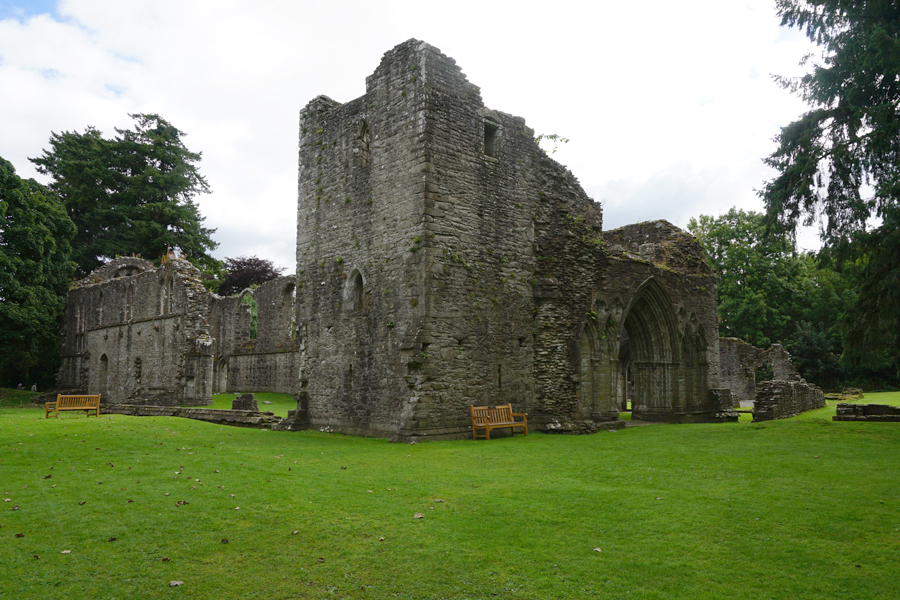
The Bell Tower
The Bell Tower (center) forms the junction between the north and west walls of the church. It is thought to have been a later addition to the church.
Lay visitors were able to worship in the nave of the church, entering through a smaller door in the north wall, just to the left of the bell tower in this photograph.
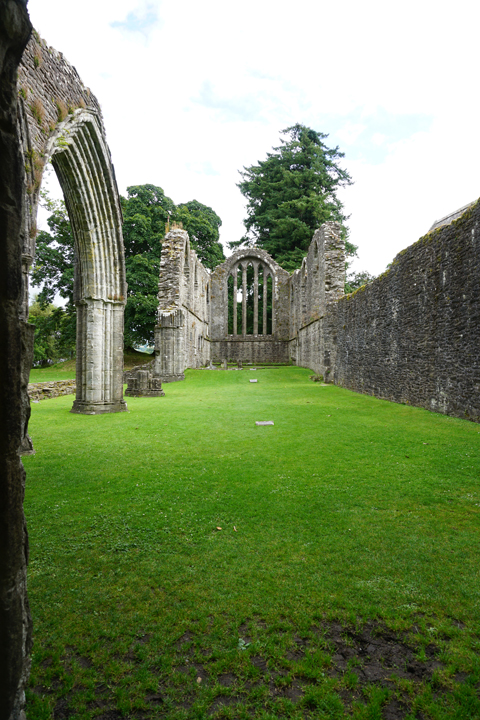
The Nave and East End
Viewed from the West End
The east end begins where you can see the higher walls still standing. The ground there rises up by a few inches above the level of the nave. This is where the altar would have been.
Along the south side of the east end of the church several structures are built into the wall.
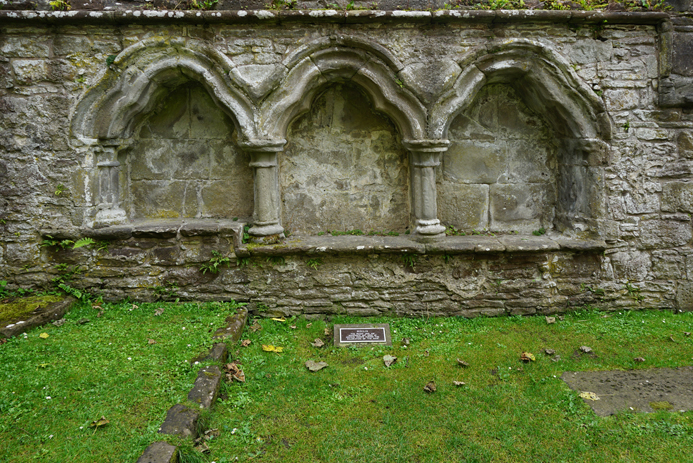
Sedilia
The Sedilia were seats for the priest and his assistants, used during Mass.
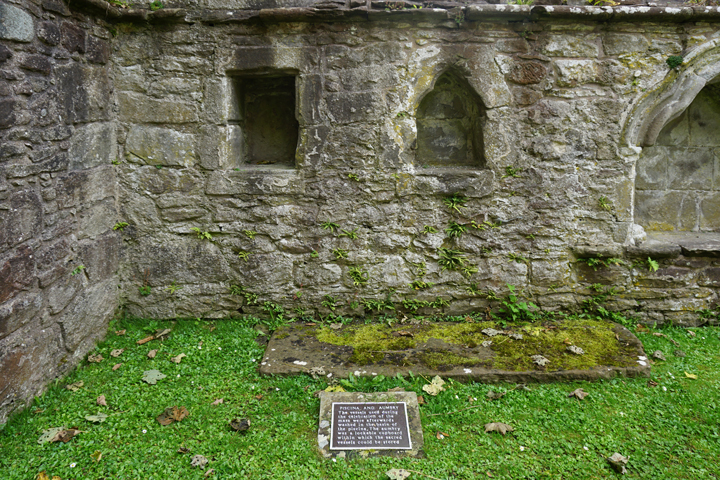
Aumbry (left), Piscina (right)
The Aumbry was a rectangular opening, or cupboard, used for storing sacred items.
The Piscina (between the aumbry and the sedilia) was a basin used for washing hands and sacred
vessels during Mass.
The following two images show the exterior of the east end of the priory church.
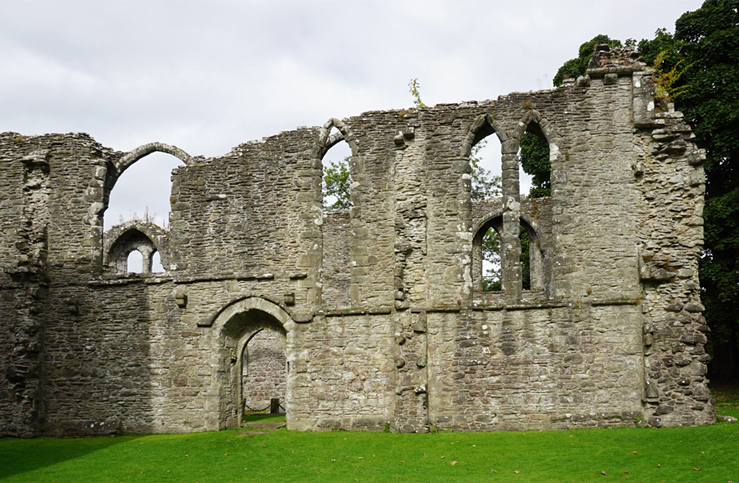
East End viewed from the South
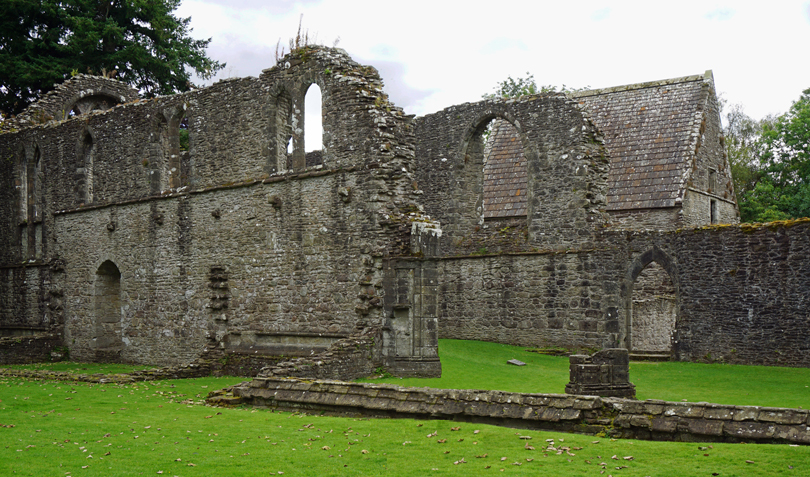
From the North.
Visible behind is the modern roof of the chapter house.
Domestic Buildings
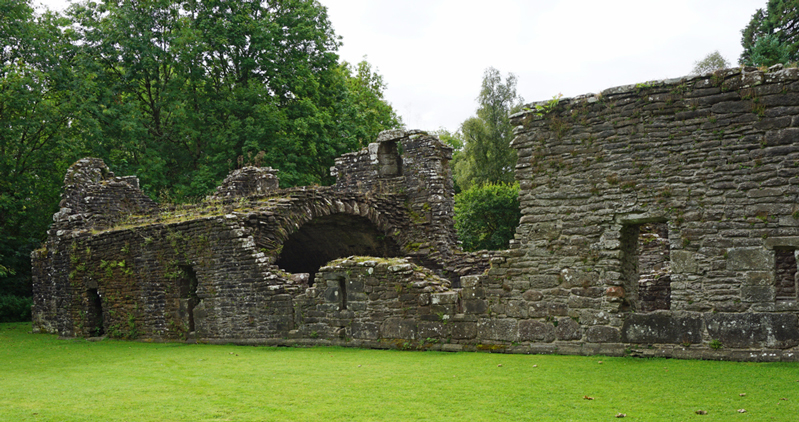
The Warming House, Kitchens, and Slype
The remains of the warming house, kitchens, and slype (refectory), from the east.
Above these would have been the dormitory. The next two images were taken from
inside the warming house / kitchen area.
The structure on the left is the remains of the day stair, used during the day to descend to the cloisters.
The single storey building is the chapter house, with a modern roof, currently used to house several memorials and fragments of carving.
It is thought that there might once have been another storey and that this housed
the child Mary Queen of Scots during her three week stay.
On the right you can see the remains of the wall of the slype (refectory).
Behind it to the right is the east end of the church. The roofed building is the chapter house.
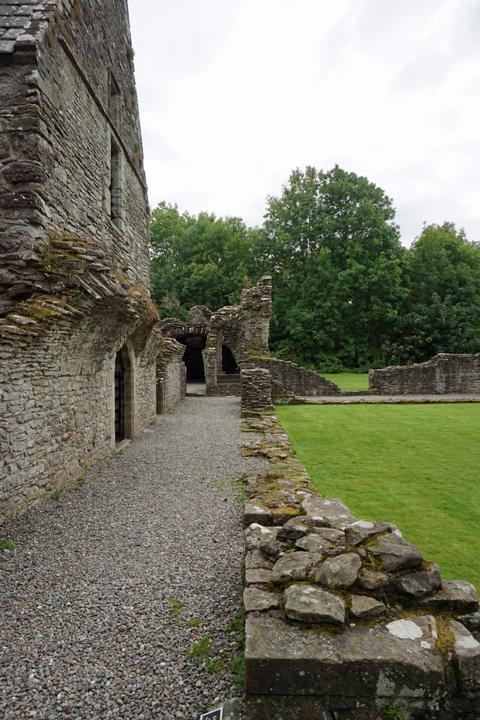
The East Cloister Walk
The east cloister walk. In the distance is the arched opening of the warming house and kitchen.
Looking at the wall that runs along walkway you can see remains of the roof which arched over it, providing some
protection from the elements.
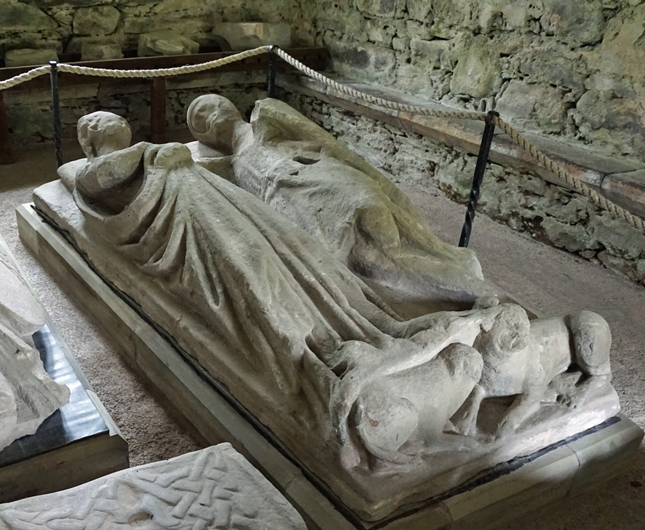
Walter Stewart, Earl of Menteith, and Countess Mary
One memorial which would have been extant when Mary Queen of Scots visited the island was the double effigy
of Earl Walter Stewart and his wife.The first Earl of Menteith, Walter Comyn, founded Inchmahome
Priory in the early 13th century. Some 30 years after his death, the Earldom was acquired by
Walter Stewart, who married Mary, the young sister-in-law of the first Walter.
The second Walter and his wife were buried in the choir of the priory church and their effigy
now stands in the chapter house.
The effigy is unusually informal. Instead of the two figures lying flat on their backs in serene
indifference, the earl lies on his side, his body curved as though he has just turned over in bed,
gazing at his wife, whose head is turned to look back at him.
Modern Anecdotes
The island has been used for filming including, some years ago, a Bollywood film. The boatman said he had taken a party of Indians across one day, mentioned the film to them, only to be told that they were the children of the actors. He saw them later reconstructing some of the scenes, popping out from behind pillars, and dancing.
There is a Spitfire at the bottom of the lake which crashed when the pilot misjudged a low manoeuvre. The Air Force retrieved the guns and the engine, and left the shell to rot. The pilot survived, but got into deep trouble!
The Dunnett connection:
In the first novel of the Lymond Chronicles, The Game of Kings, some entertaining scenes take
place at Inchmahome.

